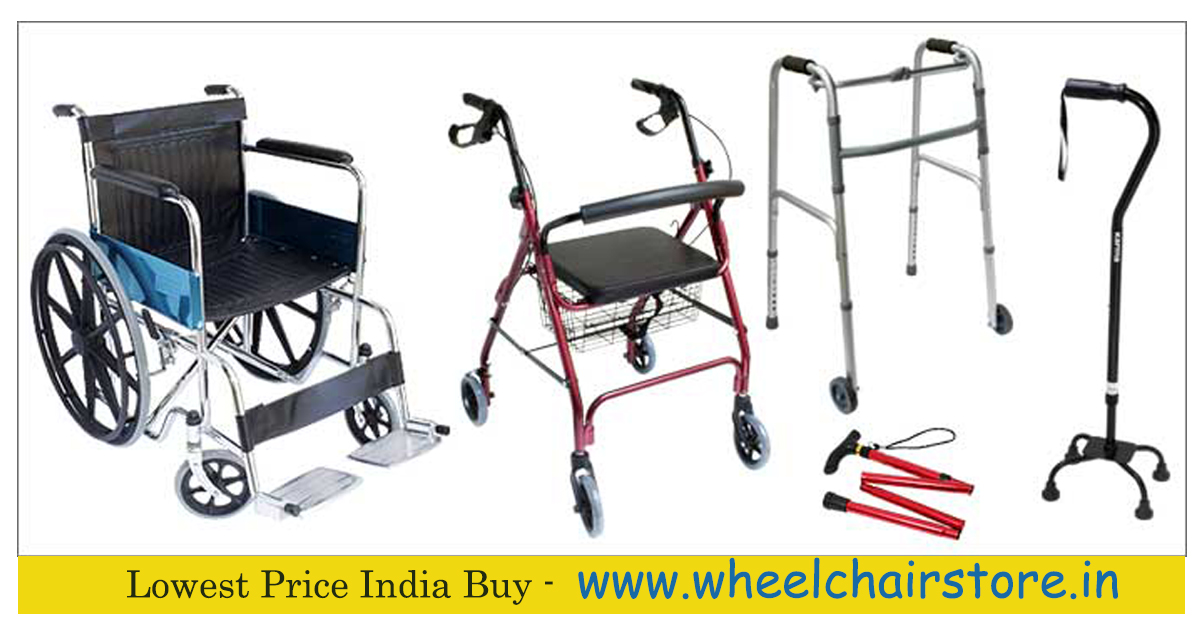Pediatric Manual Wheelchair which are fabricated using finest grade raw materials such as Aluminium, MS Steel Pipe, Stainless Steel Pipe. Pediatric Manual Wheelchair is specially designed wheelchairs are suitable for children up to 15 years of age and are capable for 50 kgs. Our range of pediatric wheelchairs are easy to handle and can be used for indoor as well as outdoor purposes.Wheelchairs for kids have smaller frame size to support lighter weight users. Seats are narrow and shallower than compared to adult wheelchairs. They are generally around 14 inches wide and closer to 12 inches deep. Pediatric wheelchairs are specifically designed for children are set a lower to the ground, for the handles to be adjusted according to the adult maneuvering the wheelchair.
Features
- Foldable frame
- Fixed armrest
- Foldable footrest
- Dual brake system
- Seat-fabric seat with foam
- Backrest-fabric backrest with foam
- Total Weight: 17kgs
- Front wheels: 6" solid wheels, rear wheels-21" solid
- Self propelling/attendant type
- Cushion armrest
Cerebral Palsy (CP) is a group of conditions caused by medical abnormalities in the development of a fetus or the early life of a child.Cerebral palsy can be a difficult condition to live with.Most people who are born with cerebral palsy may suffer from conditions such as partial eye blindness, epilepsy, difficulty with swallowing and even deafness.
 Cerebral Palsy Wheelchair Children is a congenital condition which leads to a disorder of movement, balance, muscle control and body posture.CP have to go through rigorous exercise routines to increase and improve their muscle tone, balance and movement.Children with cerebral palsy may experience delayed development of fine motor skills (use of hands), gross motor skills (large movements) and oral motor functioning (eating and speaking).Cerebral palsy affects a person’s ability to control their muscles. Muscles can become very stiff or very relaxed and weak. child with cerebral palsy must be evaluated and treated for his or her unique needs by a team of physicians, including medical specialists. Specialists can help the child maximize his or her ability to move, communicate and learn self-care.
Cerebral Palsy Wheelchair Children is a congenital condition which leads to a disorder of movement, balance, muscle control and body posture.CP have to go through rigorous exercise routines to increase and improve their muscle tone, balance and movement.Children with cerebral palsy may experience delayed development of fine motor skills (use of hands), gross motor skills (large movements) and oral motor functioning (eating and speaking).Cerebral palsy affects a person’s ability to control their muscles. Muscles can become very stiff or very relaxed and weak. child with cerebral palsy must be evaluated and treated for his or her unique needs by a team of physicians, including medical specialists. Specialists can help the child maximize his or her ability to move, communicate and learn self-care.
 Cerebral Palsy Wheelchair Children is a congenital condition which leads to a disorder of movement, balance, muscle control and body posture.CP have to go through rigorous exercise routines to increase and improve their muscle tone, balance and movement.Children with cerebral palsy may experience delayed development of fine motor skills (use of hands), gross motor skills (large movements) and oral motor functioning (eating and speaking).Cerebral palsy affects a person’s ability to control their muscles. Muscles can become very stiff or very relaxed and weak. child with cerebral palsy must be evaluated and treated for his or her unique needs by a team of physicians, including medical specialists. Specialists can help the child maximize his or her ability to move, communicate and learn self-care.
Cerebral Palsy Wheelchair Children is a congenital condition which leads to a disorder of movement, balance, muscle control and body posture.CP have to go through rigorous exercise routines to increase and improve their muscle tone, balance and movement.Children with cerebral palsy may experience delayed development of fine motor skills (use of hands), gross motor skills (large movements) and oral motor functioning (eating and speaking).Cerebral palsy affects a person’s ability to control their muscles. Muscles can become very stiff or very relaxed and weak. child with cerebral palsy must be evaluated and treated for his or her unique needs by a team of physicians, including medical specialists. Specialists can help the child maximize his or her ability to move, communicate and learn self-care. 
















